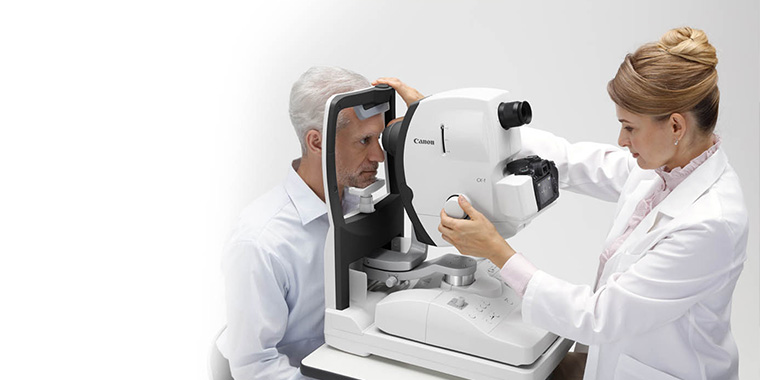Andalusia Ophthalmologist: Professional Ophthalmologists in Your Location
Andalusia Ophthalmologist: Professional Ophthalmologists in Your Location
Blog Article
The Pros and Cons of Various Refractive Surgical Procedures for Enhanced Eyecare

LASIK Surgical Treatment
LASIK surgery is a typically carried out refractive treatment that aims to deal with vision concerns such as nearsightedness, farsightedness, and astigmatism. Throughout the procedure, a slim flap is produced on the cornea, and a laser is used to reshape the underlying tissue, correcting the refractive error.
One of the primary advantages of LASIK surgical treatment is the quick renovation in vision experienced by several clients. A lot of individuals observe a substantial improvement in their eyesight quickly after the procedure, with marginal downtime needed for recovery. Furthermore, LASIK is recognized for its high success price and low occurrence of complications when executed by skilled cosmetic surgeons. Nevertheless, like any procedure, LASIK also carries some dangers, consisting of dry eyes, glare, halos, and under or overcorrection of vision. It is essential for people taking into consideration LASIK surgical treatment to go through a thorough analysis by an eye care specialist to establish if they are suitable prospects for the procedure.
PRK Procedure
The PRK treatment, also recognized as Photorefractive Keratectomy, is a kind of refractive surgery that aims to correct vision concerns similar to LASIK surgical treatment. Unlike LASIK, which entails creating a flap in the cornea, PRK functions on the surface area layer of the cornea. Throughout the PRK treatment, the outer layer of the cornea, called the epithelium, is gotten rid of to allow reshaping of the underlying corneal tissue with an excimer laser. This improving assists to remedy refractive errors such as farsightedness, nearsightedness, and astigmatism.
One of the advantages of PRK over LASIK is that it removes the threat of flap-related complications since no flap is created during the surgical treatment. Regardless of the longer healing period, PRK can be an ideal alternative for individuals looking for vision adjustment surgery.
SMILE Surgical Procedure
An innovative refractive surgery method acquiring appeal in the field of ophthalmology is SMILE Surgery. Tiny Cut Lenticule Extraction (SMILE) is a minimally invasive treatment that corrects vision by reshaping the cornea making use of a femtosecond laser. Unlike traditional LASIK surgery, SMILE Surgery entails creating a little laceration in the cornea to draw out a lenticule, which causes much less disturbance to the corneal framework and possibly quicker recovery times.
One of the key benefits of SMILE Surgery is its capacity to the original source treat nearsightedness (nearsightedness) and astigmatism with high precision, causing excellent visual results for individuals. The minimally invasive nature of the procedure additionally lowers the threat of issues such as dry eye syndrome, making it a desirable option for individuals looking for refractive surgical procedure.

LASEK Technique
Having actually explored the advantages and considerations of SMILE Surgery, one more noteworthy refractive surgery method worth analyzing is the LASEK Method. LASEK, which stands for Laser-Assisted Subepithelial Keratectomy, is a type of laser eye surgical procedure that aims to correct refractive mistakes such as myopia (nearsightedness), hyperopia (farsightedness), and astigmatism.
Unlike LASIK, LASEK does not entail producing a corneal flap. Rather, throughout a LASEK treatment, the surgeon uses a diluted alcohol solution to loosen up the slim external layer of the cornea, known as the epithelium.
Among the primary advantages of LASEK is that it can be ideal for individuals with thin corneas who might not be good candidates for LASIK. Additionally, LASEK commonly causes very little post-operative pain and a quicker recovery time compared to PRK. The visual healing process with LASEK may be a little longer than with LASIK.
Implantable Call Lenses
Implantable Get in touch with Lenses offer a long-term vision adjustment remedy for people seeking an option to conventional get in touch with lenses or glasses. These lenses, also called phakic intraocular lenses, are operatively placed right into the eye additional resources to correct refractive errors such as nearsightedness (nearsightedness), hyperopia (farsightedness), and astigmatism. eye center andalusia. Unlike conventional contact lenses that sit on the surface area of the eye, implantable call lenses work within the eye itself, providing clear vision without the demand for daily maintenance or removal
One of the essential benefits of implantable get in touch with lenses is their durability. As soon as placed, they can remain in the eye forever, supplying stable and regular vision improvement. In addition, these lenses can be an excellent alternative for individuals that are not excellent candidates for laser eye surgery or who like a relatively easy to fix vision correction procedure.
Nevertheless, implantable contact lenses do carry some threats, consisting of the possibility for cataracts or raised eye pressure. It is important for individuals considering this option to speak with an eye care professional to identify if implantable get in touch with lenses are the ideal option for their details demands and eye health and wellness.
Conclusion
To conclude, each kind of refractive surgery has its own benefits and drawbacks. LASIK surgical treatment is prominent for its quick recuperation time, while PRK treatment may be ideal for people with thin corneas. SMILE surgery uses very little discomfort throughout the procedure, yet LASEK strategy might have a longer healing process. Implantable get in touch with lenses provide an option for those who are not appropriate candidates for conventional surgical treatments. Individuals must consult with their eye care service provider to determine the best option for their specific requirements.

Overall, SMILE Surgical procedure offers an encouraging alternative for people looking to improve their vision with refractive surgical treatment.
Report this page